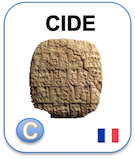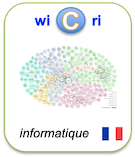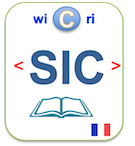Role of Health Information Technologies in the Patient-Centered Medical Home
Identifieur interne : 000459 ( Ncbi/Merge ); précédent : 000458; suivant : 000460Role of Health Information Technologies in the Patient-Centered Medical Home
Auteurs : Jennifer L. Kraschnewski ; Robert A. GabbaySource :
- Journal of Diabetes Science and Technology [ 1932-2968 ] ; 2013.
Abstract
A national effort to reform primary care, known as the Patient-Centered Medical Home (PCMH), requires fulfillment of six standards determined by the National Committee for Quality Assurance to (1) enhance access and continuity, (2) identify and manage patient populations, (3) plan and manage care, (4) provide self-care and community support, (5) track and coordinate care, and (6) measure and improve performance. Information technologies play a vital role in the support of most, if not all, of these standards. However, given the newness of the PCMH, little is known on how health information technologies (HITs) have been employed to accomplish these objectives. This article will review the role of HITs, including electronic health records, web-based patient portals, telemedicine, and patient registries, with a focus on diabetes care, and how these technologies have been engaged in the establishment of the PCMH. In addition, we will discuss the benefits and potential risks and barriers to employing these technologies, including privacy and security concerns, as well as describe next steps for future work in this important area.
Url:
PubMed: 24124967
PubMed Central: 3876384
Links toward previous steps (curation, corpus...)
- to stream Pmc, to step Corpus: 000691
- to stream Pmc, to step Curation: 000691
- to stream Pmc, to step Checkpoint: 000270
Links to Exploration step
PMC:3876384Le document en format XML
<record><TEI><teiHeader><fileDesc><titleStmt><title xml:lang="en">Role of Health Information Technologies in the Patient-Centered Medical Home</title><author><name sortKey="Kraschnewski, Jennifer L" sort="Kraschnewski, Jennifer L" uniqKey="Kraschnewski J" first="Jennifer L." last="Kraschnewski">Jennifer L. Kraschnewski</name></author><author><name sortKey="Gabbay, Robert A" sort="Gabbay, Robert A" uniqKey="Gabbay R" first="Robert A." last="Gabbay">Robert A. Gabbay</name></author></titleStmt><publicationStmt><idno type="wicri:source">PMC</idno><idno type="pmid">24124967</idno><idno type="pmc">3876384</idno><idno type="url">http://www.ncbi.nlm.nih.gov/pmc/articles/PMC3876384</idno><idno type="RBID">PMC:3876384</idno><date when="2013">2013</date><idno type="wicri:Area/Pmc/Corpus">000691</idno><idno type="wicri:Area/Pmc/Curation">000691</idno><idno type="wicri:Area/Pmc/Checkpoint">000270</idno><idno type="wicri:Area/Ncbi/Merge">000459</idno></publicationStmt><sourceDesc><biblStruct><analytic><title xml:lang="en" level="a" type="main">Role of Health Information Technologies in the Patient-Centered Medical Home</title><author><name sortKey="Kraschnewski, Jennifer L" sort="Kraschnewski, Jennifer L" uniqKey="Kraschnewski J" first="Jennifer L." last="Kraschnewski">Jennifer L. Kraschnewski</name></author><author><name sortKey="Gabbay, Robert A" sort="Gabbay, Robert A" uniqKey="Gabbay R" first="Robert A." last="Gabbay">Robert A. Gabbay</name></author></analytic><series><title level="j">Journal of Diabetes Science and Technology</title><idno type="eISSN">1932-2968</idno><imprint><date when="2013">2013</date></imprint></series></biblStruct></sourceDesc></fileDesc><profileDesc><textClass></textClass></profileDesc></teiHeader><front><div type="abstract" xml:lang="en"><p>A national effort to reform primary care, known as the Patient-Centered Medical Home (PCMH), requires fulfillment of six standards determined by the National Committee for Quality Assurance to (1) enhance access and continuity, (2) identify and manage patient populations, (3) plan and manage care, (4) provide self-care and community support, (5) track and coordinate care, and (6) measure and improve performance. Information technologies play a vital role in the support of most, if not all, of these standards. However, given the newness of the PCMH, little is known on how health information technologies (HITs) have been employed to accomplish these objectives. This article will review the role of HITs, including electronic health records, web-based patient portals, telemedicine, and patient registries, with a focus on diabetes care, and how these technologies have been engaged in the establishment of the PCMH. In addition, we will discuss the benefits and potential risks and barriers to employing these technologies, including privacy and security concerns, as well as describe next steps for future work in this important area.</p></div></front></TEI><pmc article-type="review-article"><pmc-comment>The publisher of this article does not allow downloading of the full text in XML form.</pmc-comment>
<front><journal-meta><journal-id journal-id-type="nlm-ta">J Diabetes Sci Technol</journal-id><journal-id journal-id-type="iso-abbrev">J Diabetes Sci Technol</journal-id><journal-id journal-id-type="publisher-id">dst</journal-id><journal-title-group><journal-title>Journal of Diabetes Science and Technology</journal-title></journal-title-group><issn pub-type="epub">1932-2968</issn><publisher><publisher-name>Diabetes Technology Society</publisher-name></publisher></journal-meta><article-meta><article-id pub-id-type="pmid">24124967</article-id><article-id pub-id-type="pmc">3876384</article-id><article-id pub-id-type="publisher-id">dst.7.5.1376</article-id><article-categories><subj-group subj-group-type="heading"><subject>Review Article</subject></subj-group></article-categories><title-group><article-title>Role of Health Information Technologies in the Patient-Centered Medical Home</article-title></title-group><contrib-group><contrib contrib-type="author"><name><surname>Kraschnewski</surname><given-names>Jennifer L.</given-names></name><degrees>M.D., M.P.H.</degrees></contrib><contrib contrib-type="author"><name><surname>Gabbay</surname><given-names>Robert A.</given-names></name><degrees>M.D., Ph.D.</degrees></contrib><aff><institution>The Pennsylvania State University College of Medicine</institution>,<addr-line>Hershey</addr-line>,<country>Pennsylvania</country></aff></contrib-group><author-notes><corresp><bold>Corresponding Author:</bold> Jennifer L. Kraschnewski, M.D., M.P.H., The Pennsylvania State University College of Medicine, 500 University Dr., HO34, Hershey, PA 17033; email address <email>jkraschnewski@hmc.psu.edu</email></corresp></author-notes><pub-date pub-type="epub"><day>01</day><month>9</month><year>2013</year></pub-date><pub-date pub-type="collection"><month>9</month><year>2013</year></pub-date><volume>7</volume><issue>5</issue><fpage>1376</fpage><lpage>1385</lpage><permissions><copyright-statement>© 2013 Diabetes Technology Society</copyright-statement><copyright-year>2013</copyright-year></permissions><abstract><p>A national effort to reform primary care, known as the Patient-Centered Medical Home (PCMH), requires fulfillment of six standards determined by the National Committee for Quality Assurance to (1) enhance access and continuity, (2) identify and manage patient populations, (3) plan and manage care, (4) provide self-care and community support, (5) track and coordinate care, and (6) measure and improve performance. Information technologies play a vital role in the support of most, if not all, of these standards. However, given the newness of the PCMH, little is known on how health information technologies (HITs) have been employed to accomplish these objectives. This article will review the role of HITs, including electronic health records, web-based patient portals, telemedicine, and patient registries, with a focus on diabetes care, and how these technologies have been engaged in the establishment of the PCMH. In addition, we will discuss the benefits and potential risks and barriers to employing these technologies, including privacy and security concerns, as well as describe next steps for future work in this important area.</p></abstract><kwd-group><kwd>diabetes</kwd><kwd>electronic health record</kwd><kwd>health information technology</kwd><kwd>Patient-Centered Medical Home</kwd><kwd>primary care</kwd></kwd-group></article-meta></front></pmc><affiliations><list></list><tree><noCountry><name sortKey="Gabbay, Robert A" sort="Gabbay, Robert A" uniqKey="Gabbay R" first="Robert A." last="Gabbay">Robert A. Gabbay</name><name sortKey="Kraschnewski, Jennifer L" sort="Kraschnewski, Jennifer L" uniqKey="Kraschnewski J" first="Jennifer L." last="Kraschnewski">Jennifer L. Kraschnewski</name></noCountry></tree></affiliations></record>Pour manipuler ce document sous Unix (Dilib)
EXPLOR_STEP=$WICRI_ROOT/Ticri/CIDE/explor/CyberinfraV1/Data/Ncbi/Merge
HfdSelect -h $EXPLOR_STEP/biblio.hfd -nk 000459 | SxmlIndent | more
Ou
HfdSelect -h $EXPLOR_AREA/Data/Ncbi/Merge/biblio.hfd -nk 000459 | SxmlIndent | more
Pour mettre un lien sur cette page dans le réseau Wicri
{{Explor lien
|wiki= Ticri/CIDE
|area= CyberinfraV1
|flux= Ncbi
|étape= Merge
|type= RBID
|clé= PMC:3876384
|texte= Role of Health Information Technologies in the Patient-Centered Medical Home
}}
Pour générer des pages wiki
HfdIndexSelect -h $EXPLOR_AREA/Data/Ncbi/Merge/RBID.i -Sk "pubmed:24124967" \
| HfdSelect -Kh $EXPLOR_AREA/Data/Ncbi/Merge/biblio.hfd \
| NlmPubMed2Wicri -a CyberinfraV1
|
| This area was generated with Dilib version V0.6.25. | |



